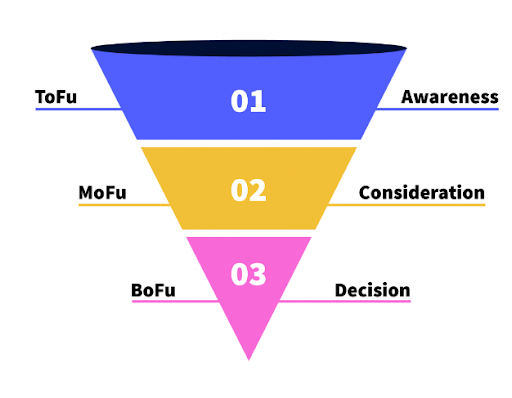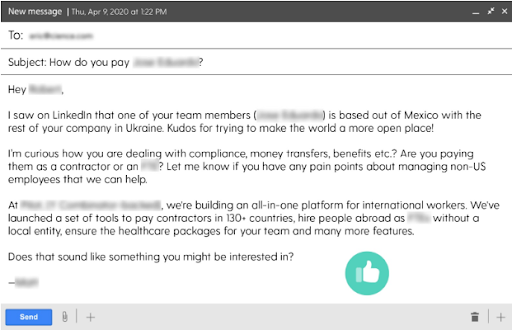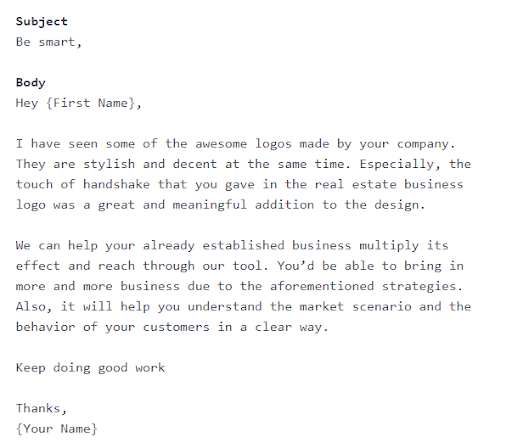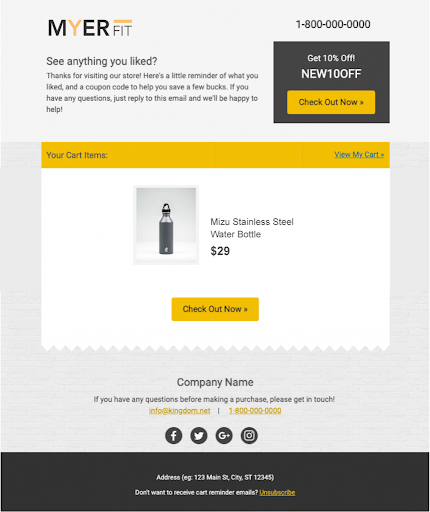- Products
- ProspectSQL/MQL list building with high levels of personalization, real-time data enrichment and prospect search
- Email FinderFind individual or bulk emails by entering the person & company name or domain
- Email VerifierVerify emails addresses individually, in bulk or through API, with 99% accuracy
- Clearout For SheetsVerify email addresses directly on Google Sheets with Clearout for sheets add-on
- ClearoutPhoneValidate phone numbers across 240+ countries in bulk, quick or real time validation Free Tools
- Disposable Email Checker
- Reverse LinkedIn Profile Lookup Tool
- Reverse Email Lookup Tool
- Email List Cleaner
- Resource
- Pricing
- Integrations
- Enterprise
- Login
How to Write a Sales Email That Converts!

Emails are still one of the most popular means of generating sales.💲
Sales experts put a lot of effort and time into setting up their email outreach campaigns. Most customers, however, detest receiving correspondence from them..😓
According to Gartner, just 23.9% of customers open these sales emails.
The low open rate is because of unappealing emails. Customers consider them as just another piece of junk in their inbox. Nothing prompts recipients to mark the email as spam faster than when it is crafted poorly and lacks value. 👎
But the real kicker? If done correctly, they can work amazingly well.
Sales emails are powerful tools for acquiring new clients, provided they are well-written and sent to the right recipients. Your primary focus should be to develop and deliver nurturing emails that establish a connection with potential customers.
You're up against some strong competitors, with an industry average open rate of little over 21% and an average click rate of 2.62 %.
Without further a-do, let’s delve into understanding how to establish a better connection with your prospects and write emails that convert!
Sales experts put a lot of effort and time into setting up their email outreach campaigns. Most customers, however, detest receiving correspondence from them..😓
According to Gartner, just 23.9% of customers open these sales emails.
The low open rate is because of unappealing emails. Customers consider them as just another piece of junk in their inbox. Nothing prompts recipients to mark the email as spam faster than when it is crafted poorly and lacks value. 👎
But the real kicker? If done correctly, they can work amazingly well.
Sales emails are powerful tools for acquiring new clients, provided they are well-written and sent to the right recipients. Your primary focus should be to develop and deliver nurturing emails that establish a connection with potential customers.
You're up against some strong competitors, with an industry average open rate of little over 21% and an average click rate of 2.62 %.
Without further a-do, let’s delve into understanding how to establish a better connection with your prospects and write emails that convert!

What makes nurturing emails effective in customer communication?
Lead nurturing emails are an important aspect of any email marketing strategy and one of the most effective lead nurturing techniques available. With the aid of lead nurturing emails, you can establish a relationship with your prospects and guide them through the sales process until they are ready to become your customers.
However, not all sales emails are the same. Sending a cold email to a lead who has never subscribed to your list is more likely to result in a trip to the spam folder than a sale.
51% of customers report an email as spam because they unintentionally subscribed in the first place.
As a small firm, you don't have a workforce of sales representatives to conduct cold calls
Read: 12 Best Practices for Lead Nurturing Emails
That’s when lead generation comes in, where you proactively ask the customers whether they want to sign up for your mailing list. By doing this, you can improve the lower open rates and lower subscriber opt-out rates on your mailing list. Leads acquired via a lead magnet or an opt-in newsletter form are added to your marketing funnel, and we anticipate hearing from you.
The path a prospective lead travels from their first interaction with your organization until they complete a purchase is depicted by a marketing funnel. A lead's position in the funnel varies, depending on how well-versed they are in your brand and how close they are to making their decision.
However, not all sales emails are the same. Sending a cold email to a lead who has never subscribed to your list is more likely to result in a trip to the spam folder than a sale.
51% of customers report an email as spam because they unintentionally subscribed in the first place.
As a small firm, you don't have a workforce of sales representatives to conduct cold calls
Read: 12 Best Practices for Lead Nurturing Emails
That’s when lead generation comes in, where you proactively ask the customers whether they want to sign up for your mailing list. By doing this, you can improve the lower open rates and lower subscriber opt-out rates on your mailing list. Leads acquired via a lead magnet or an opt-in newsletter form are added to your marketing funnel, and we anticipate hearing from you.
The path a prospective lead travels from their first interaction with your organization until they complete a purchase is depicted by a marketing funnel. A lead's position in the funnel varies, depending on how well-versed they are in your brand and how close they are to making their decision.
Source : genial.ly
Customers in the consideration stage are aware of their problems and have multiple ways to solve them. Here, they are researching and evaluating a handful of products before making a decision. Now it's up to you to persuade them that your product is the one that will work the best for them. In this case, nurture emails are helpful.
In an environment where 80% of fresh leads never materialize in sales, high-quality sales emails may be the difference between skyrocketing profits and underwhelming revenue statistics. Contrary to non-nurtured leads, nurtured leads make purchases that are 47% higher.
So, what strategies can you use to create sales emails that generate leads and boost conversions?
Let’s find out.
In an environment where 80% of fresh leads never materialize in sales, high-quality sales emails may be the difference between skyrocketing profits and underwhelming revenue statistics. Contrary to non-nurtured leads, nurtured leads make purchases that are 47% higher.
So, what strategies can you use to create sales emails that generate leads and boost conversions?
Let’s find out.
What are the steps in creating a compelling sales email?
Prospects might not be very familiar with you or your products, so they'll want a compelling argument to open, read, and convert. Marketers must know how to construct an engaging sales pitch to elicit the expected response.
Writing an efficient sales email requires a step-by-step approach, and each sales email is divided into five components. Ensure your prospect interacts with each component and takes the desired action.
Writing an efficient sales email requires a step-by-step approach, and each sales email is divided into five components. Ensure your prospect interacts with each component and takes the desired action.
1. Email List Segmentation
Segmentation of your audience is the first thing you should do before crafting an email. It entails dividing your email subscriber base into smaller lists (or segments) per pre-established criteria. These criteria could include their interests, problems, previous behavior, where they are in the sales process, and a lot more.
By segmenting your email list, you can build a personalized user experience and send suitable materials to the right individual at the right time.
By segmenting your email list, you may gain valuable information about prospects and where they are in the purchase process. Once you have some information, you may develop a sales email that boosts their trust in your expertise and products.
Now that you've segmented your email list, let's start writing a great sales email.
By segmenting your email list, you can build a personalized user experience and send suitable materials to the right individual at the right time.
By segmenting your email list, you may gain valuable information about prospects and where they are in the purchase process. Once you have some information, you may develop a sales email that boosts their trust in your expertise and products.
Now that you've segmented your email list, let's start writing a great sales email.
2. Eye-Catching Subject Line
Subject lines are an essential component of email marketing. It lets readers know what to expect in the email.
According to Statista, more than 300 billion emails are sent everyday. Even if you have the finest email copy and the most incredible product in the world, it doesn’t matter if your subscribers don't open your emails. With a compelling subject line, you may make your sales email stand out in a crowded inbox.
Here are some points worth noting while writing a sales email:
According to Statista, more than 300 billion emails are sent everyday. Even if you have the finest email copy and the most incredible product in the world, it doesn’t matter if your subscribers don't open your emails. With a compelling subject line, you may make your sales email stand out in a crowded inbox.
Here are some points worth noting while writing a sales email:
- Avoid being obtrusive or forceful in the subject line.
- Addressing the prospect’s problem or solution may rapidly pique their attention, and they are more likely to open and read your emails if they find them relevant.
- An emoji (if appropriate for the brand) in the subject line can increase the open rate of emails by 56%.
- Aim to keep it within 6-10 words. It should be short and crisp.
- Finally, NEVER LIE! It's one thing to twist your words, but outright lying and spreading clickbait may backfire. Why?
- When people find the content is not what they were being sold in the subject line, they are likely to be annoyed. This will damage your reputation and even lead your prospects to unsubscribe or block you.
After you've created an eye-catching subject line, It's time to write your email's content.
3. Persuasive Email Body
Now that your prospect is aware of the email's contents, he will seek your proposals in the email. This is where you must carefully craft your email and persuade people toward your offerings.
And, as previously said, being persuasive does not imply being forceful.
Make sure that each email in the sequence aims to prevent your emails from appearing overly sales-y. The body of the sales email should not contain clichéd messages. For instance, "we provide the strongest collaboration tools to enhance your productivity by 400%."
You can talk about your prospect’s pain points. Offer them a useful, comforting approach so that they can relate to your organization. Remember to keep your email concise and clear.
It's easy to persuade your readers to act with a well-written email body copy, but a captivating CTA is even more powerful.
And, as previously said, being persuasive does not imply being forceful.
Make sure that each email in the sequence aims to prevent your emails from appearing overly sales-y. The body of the sales email should not contain clichéd messages. For instance, "we provide the strongest collaboration tools to enhance your productivity by 400%."
You can talk about your prospect’s pain points. Offer them a useful, comforting approach so that they can relate to your organization. Remember to keep your email concise and clear.
It's easy to persuade your readers to act with a well-written email body copy, but a captivating CTA is even more powerful.
4. A Compelling CTA
A concise call-to-action tells readers exactly what you want them to do after reading your email.
Your CTA provides your prospects an added incentive to take action when combined with the persuasive copy you created in step 3.
A strong call-to-action informs the reader of their next move. Resist the urge to beg your readers to follow you on social media, sign up for your next webinar, or buy your new e-book at this point. For the time being, at least.
According to Hick's Law, people take longer to make decisions when provided with more options. It is also feasible that they will not decide at all.
Your CTA provides your prospects an added incentive to take action when combined with the persuasive copy you created in step 3.
A strong call-to-action informs the reader of their next move. Resist the urge to beg your readers to follow you on social media, sign up for your next webinar, or buy your new e-book at this point. For the time being, at least.
According to Hick's Law, people take longer to make decisions when provided with more options. It is also feasible that they will not decide at all.
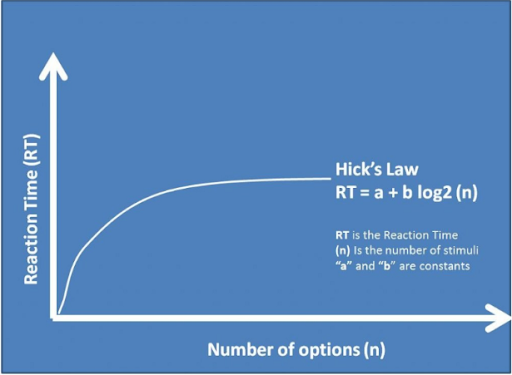
Keep your CTA concise to assist prospective customers in avoiding analysis paralysis and simplifying their purchasing decisions.
Read: How to Create an Email Call-To-Action (CTA) That Enhances Conversion Rate!
Here are some pointers for crafting a CTA that would entice readers to click:
Read: How to Create an Email Call-To-Action (CTA) That Enhances Conversion Rate!
Here are some pointers for crafting a CTA that would entice readers to click:
- Avoid common CTAs such as "click here", "submit", and "learn more" Use appealing language that is also actionable, as Trello does in this example with the CTA "Go To The Guide"

- The CTA should be kept brief and simple, with no more than six words.
- People's buying habits are heavily impacted by their fear of missing out (FOMO). 48% of people say a special offer would prompt purchases to be made sooner.
- Avoid using a lot of CTAs in cold emails since they might be overwhelming for readers.
Moving on to the final step in finishing your email writing, email signatures.
5. Signing Off
An email signature is similar to a business card in the internet world.
Avoid using misleading or clichéd signatures while crafting a sales email. The end note reinforces the trustworthiness of your email and provides further information.
For better results, try sticking to these guidelines:
Avoid using misleading or clichéd signatures while crafting a sales email. The end note reinforces the trustworthiness of your email and provides further information.
For better results, try sticking to these guidelines:
- We can’t say it enough - *Keep it simple and clear*
- Include a link to your LinkedIn profile, a professional profile.
- Mention the brand’s name and your contact details, such as email and phone number.
Bonus: Psychology to Create Better Sales Campaigns
Our brains are wired to react predictably to certain types of input. It is precisely for this reason that psychology can assist you in creating emails that are more successful and convert better.
Here are some of the psychological factors that make prospects read and click:
Our fear of missing out (FOMO) makes us never want to miss out on anything. It's for this reason that time-limited discounts are so successful. Scarcity and urgency in your email will attract your prospects' attention and lead to more clicks.
Color choice, since different colors elicit different reactions and thus using colors effectively in CTA buttons can get you more clicks.
Social proof convinces your prospects that you're good, which increases the likelihood that they will read your emails.
Personalization, which we have already spoken about, is another key factor that engages prospects and increases their chances of connecting with your business.
Identity Validation with Email Signatures is another influential factor that makes a prospect trust you, consider your brand reliable and engage with you.
That’s all. Now you are all equipped to start writing your own sales emails. To help you get started, here are some sales email examples to get inspired from–
Here are some of the psychological factors that make prospects read and click:
That’s all. Now you are all equipped to start writing your own sales emails. To help you get started, here are some sales email examples to get inspired from–
Sales Email Templates and Examples To Get Inspired From
Example #1: Ask a query to pique the reader's curiosity.
Source : cience.com
Example #2: Add a personal note
Source : saleshandy.com
Example #3: Relevant Product Interest
Source: cartstack.com
Bottom Line
It takes skill and lots of effort to create an email that converts effectively. Or, to be more precise, it necessitates practice with the appropriate approach. A lighthouse for the sales representative is a sales email approach based on extensive research and insights.
Additionally, it aids in the uniformity and consistency of your email marketing campaigns.
You don't need to set up complicated tools and automation or recruit a sales team to convert leads into customers. All you need is the ideal nurturing campaign for your company and clientele.
Although these exact same emails may not always be suitable, the context always applies since it derives from continual human nature. Take a shot. Don't be afraid to attempt new things. You could just find the ideal sales email strategy.
Additionally, it aids in the uniformity and consistency of your email marketing campaigns.
You don't need to set up complicated tools and automation or recruit a sales team to convert leads into customers. All you need is the ideal nurturing campaign for your company and clientele.
Although these exact same emails may not always be suitable, the context always applies since it derives from continual human nature. Take a shot. Don't be afraid to attempt new things. You could just find the ideal sales email strategy.

Recent Posts
01 Jul 2025
Best Zoho CRM Integrations for Sales & Marketing in 2025
Discover the top Zoho CRM integrations in 2025 categorized by use case. Explore how each tool's key ...
01 Jul 2025
Sales Automation in 2025: The Guide to Close More Deals Faster
Struggling with manual sales workflows? Follow this guide to explore the sales automation use cases, ...
25 Jun 2025
Top 6 Email Finder APIs in 2025 for All Use Cases
Looking for a reliable Email Finder API? Explore the top 6 email finder APIs of 2025—compare key fea ...
17 Jun 2025
Top 10 Email Spam Checker Tools Tested & Reviewed (2025)
Check out the top 10 email spam checker tools to avoid junk folders. Compare features, ratings & use ...
06 Jun 2025
How To Create a Lead Magnet That Converts in 2025
Looking for more leads? Read how to create a high-converting lead magnet in 2025 with step-by-step g ...
Prospecting ,Email Finder & Email Verification Service
Prospecting ,Email Finder & Email Verification Service
Expand your reach by discovering and verifying the ideal prospects.
Sign up & get 100 free credits | No Credit Card required


